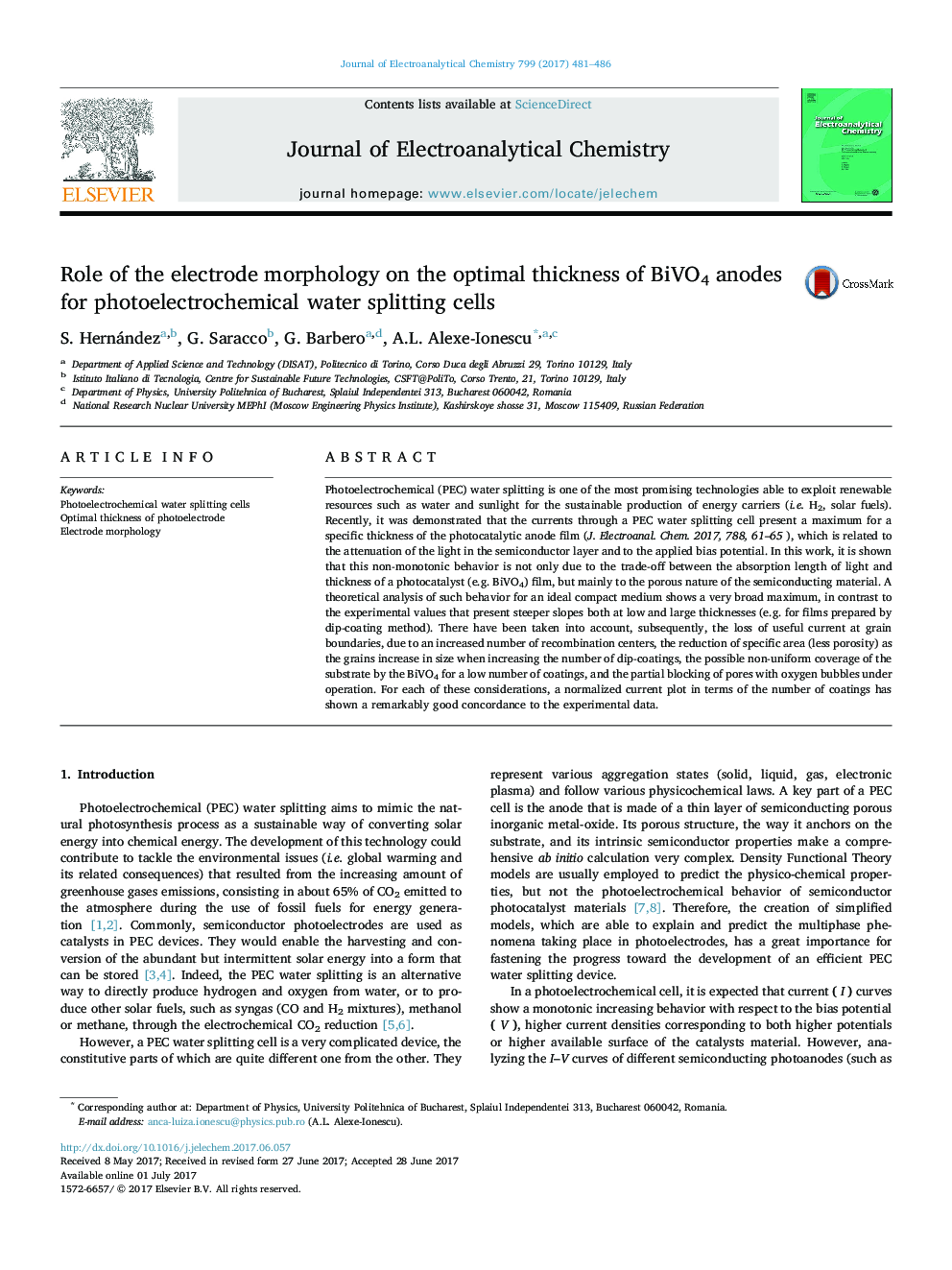| Article ID | Journal | Published Year | Pages | File Type |
|---|---|---|---|---|
| 4907779 | Journal of Electroanalytical Chemistry | 2017 | 6 Pages |
Abstract
Photoelectrochemical (PEC) water splitting is one of the most promising technologies able to exploit renewable resources such as water and sunlight for the sustainable production of energy carriers (i.e. H2, solar fuels). Recently, it was demonstrated that the currents through a PEC water splitting cell present a maximum for a specific thickness of the photocatalytic anode film (J. Electroanal. Chem. 2017, 788, 61-65 ), which is related to the attenuation of the light in the semiconductor layer and to the applied bias potential. In this work, it is shown that this non-monotonic behavior is not only due to the trade-off between the absorption length of light and thickness of a photocatalyst (e.g. BiVO4) film, but mainly to the porous nature of the semiconducting material. A theoretical analysis of such behavior for an ideal compact medium shows a very broad maximum, in contrast to the experimental values that present steeper slopes both at low and large thicknesses (e.g. for films prepared by dip-coating method). There have been taken into account, subsequently, the loss of useful current at grain boundaries, due to an increased number of recombination centers, the reduction of specific area (less porosity) as the grains increase in size when increasing the number of dip-coatings, the possible non-uniform coverage of the substrate by the BiVO4 for a low number of coatings, and the partial blocking of pores with oxygen bubbles under operation. For each of these considerations, a normalized current plot in terms of the number of coatings has shown a remarkably good concordance to the experimental data.
Keywords
Related Topics
Physical Sciences and Engineering
Chemical Engineering
Chemical Engineering (General)
Authors
S. Hernández, G. Saracco, G. Barbero, A.L. Alexe-Ionescu,
